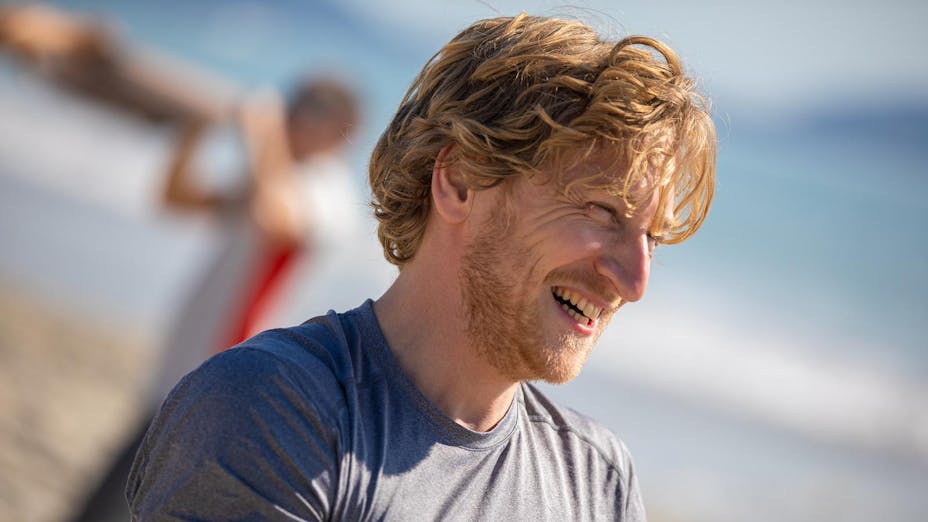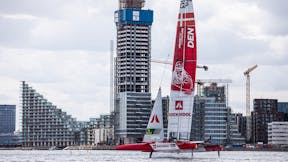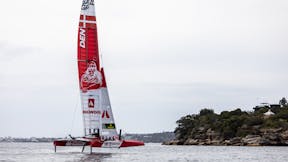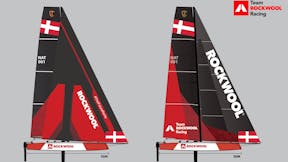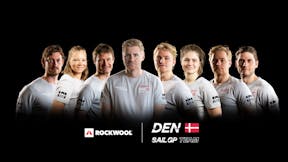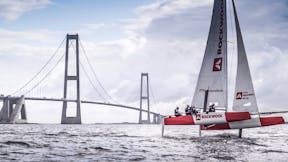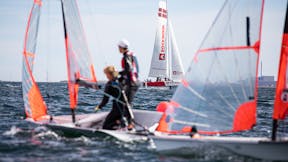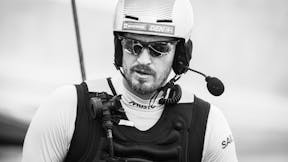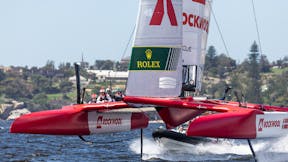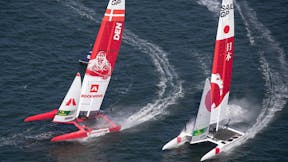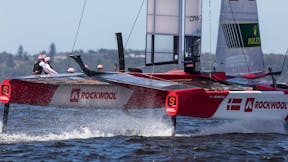But every top sailing team knows that the real magic happens on shore – and it’s the team and preparation you put together off the water than can really make the difference when you’re on it.
Meet Peter Wibroe: expert Data Analyst and Denmark SailGP Team’s resident number-cruncher, who spends his time wading through SailGP’s vast amounts of data and reading between the lines, in search of every possible advantage.
Peter has one objective – to help the Danish team perform better. And in this game, with boats racing at up to 100 km/hr, even the finest margins can be the difference between winning and losing.
SailGP has a unique approach to data – and it’s quite simple. Everything is open, transparent, and available to view across the fleet, in real-time. When you’re being tracked by thousands of data channels, there are no secrets.
“As a new team into SailGP, we have a lot of catching up to do – and so we spend a lot of time looking at the data from the other boats,” explains Nicolai Sehested, helmsman of Denmark SailGP Team presented by ROCKWOOL.
“It’s unique that all of the teams have access to each other’s data, but I think that the best way to go about it is to share, as it gives us a level playing field.”
Just as ROCKWOOL harnesses data to produce leading and innovative solutions, the Denmark SailGP Team athletes use the numbers to constantly adapt and refine their approach to racing the boat.
But, when every team has access to the same information, how do you find a competitive advantage? The key, Peter explains, is being able to pick through the data – and strike gold.
Hi Peter! You have one of the most fascinating jobs on the Denmark SailGP Team – how did you become a data analyst, and what does your daily work entail?
Well, I am and have always been a bit of a geek. I love numbers. I have a background in Nano Medicine – a PhD from the University of Copenhagen. In that job, it's all about finding patterns in often some very large and confusing data sets. I love it and that was a motivating factor for going through an otherwise quite boring PhD!
That's more or less what this is all about. To be attacked by huge amounts of data, and trying to find sense in that. In SailGP, the beauty is being able to understand it and translate it into something useful to better the team’s performance.
SailGP is quite unique in that all of the data is open source – as a sailor who is passionate about numbers, it must be a dream job!
Being able to be work with such a complete and accurate data set that is open to all athletes across the sport, is quite unique. It's something that really allows our team to have an edge since we're new and we can learn so much and sneak in to what the other teams did last season.
Something quite fascinating but also frustrating is that we see everything in the SailGP data. There are so many sensors and measurements on the boats, and also on the marks on the race course, so we have everything – all the actions and settings that the sailors are doing, not just on our boat, but on the other teams. The next step is being able to understand it, and read it. It's like a new language – the answer to everything is in the data, but we just need to understand what language it's written.

